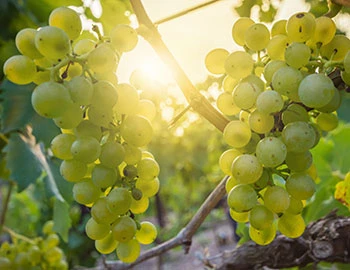Sulzfelder Silvaner Alte Reben 2022
QbA Franken, Zehnthof Weingut Luckert, 750 ml

| Grape variety: | Sylvaner |
| Producer: | Weingut Zehnthof Luckert |
| Origin: | Germany / Franconia |
Description
The "Grosse Lage Maustal" vineyard is home to over 50-year-old Silvaner vines, which form the starting point for this wine. The Luckert family's signature is elegant and produces finely structured Franconian wines. In its incredibly complex nose, it shows aromas of cool herbs, a smoky touch and something of a bakery scent, which comes from the yeast. On the palate, it is mineral, full-bodied, with a beautiful length and a spectrum of aromas reminiscent of tangerines, bergamot and some bread spice.
Attributes
| Origin: | Germany / Franconia |
| Grape variety: | Sylvaner |
| Label: | Certified organic or biodynamic wine |
| Ripening potential: | 1 to 5 years after harvest |
| Drinking temperature: | 10 to 12 °C |
| Food Pairing: | Apéro riche, Vegetable flan, quiche, Salad with vegetables, pulses, pasta, Asparagus specialities |
| Volume: | 13.0 % |
| Note: | Contains sulphites |
Zehnthof Luckert Winery
The winery is located in the Zehnthof prince-bishop's residence built in Sulzfeld am Main, Lower Franconia in 1558, and is known for wines with a distinctive and mineral character. The vineyards covering 17 hectares belonging to the winery are cultivated by Ulrich Luckert, his brother Wolfgang and the latter's son Philipp.
Since 1955 the winery has belonged to the VDP. The Verband Deutscher Prädikatsweingüter (Association of German Quality Wineries) is a federation of around 200 wineries in Germany that promotes binding quality standards and - since 1990 - the ecological management of its members' vineyards. In terms of VDP classification the Zehnthof-Luckert range includes 'Gutsweine' (estate-bottled) wines, 'Erste Lage' (premier cru) wines from the Berg and Sonnenberg vineyards, as well as 'Grosse Lage' (grand cru) wines from the Maustal vineyard. The wines enjoy EU organic certification.

Sylvaner
Asparagus partner and sweet wine star
The Sylvaner was created over a century ago as a spontaneous crossing in Austria. Today, only minute quantities are found there. It occupies the largest area in Germany, where it is spelled “Silvaner”. Well into the 1970s, it even trumped Riesling there by area. In France, Alsace has the monopoly on the Sylvaner. There, the variety is prized mainly in Valais; there, it is called Johannisberg or Johannis for short. Dry examples are perfect wines for asparagus: spirited and full-bodied, with moderate acidity and a delicate aroma of herbs, gooseberries and fresh hay. In addition, it yields superb dessert wines that can mature for two to three decades without issue.

Germany
Germany – Into the elite the hard way
Sitting in the heart of Europe, the hilly, lake-dotted landscape of Germany provides ideal, fertile soil for the most diverse vine varieties. From Albalonga to Zweigelt, over 140 different grape varieties are grown on about 100,000 acres, cared for by nearly 50,000 vintners. Most of these vintners are young, modern, internationally trained, inquisitive and urbane. It is hardly surprising, then, that German wine has a good reputation well beyond the country's borders.



